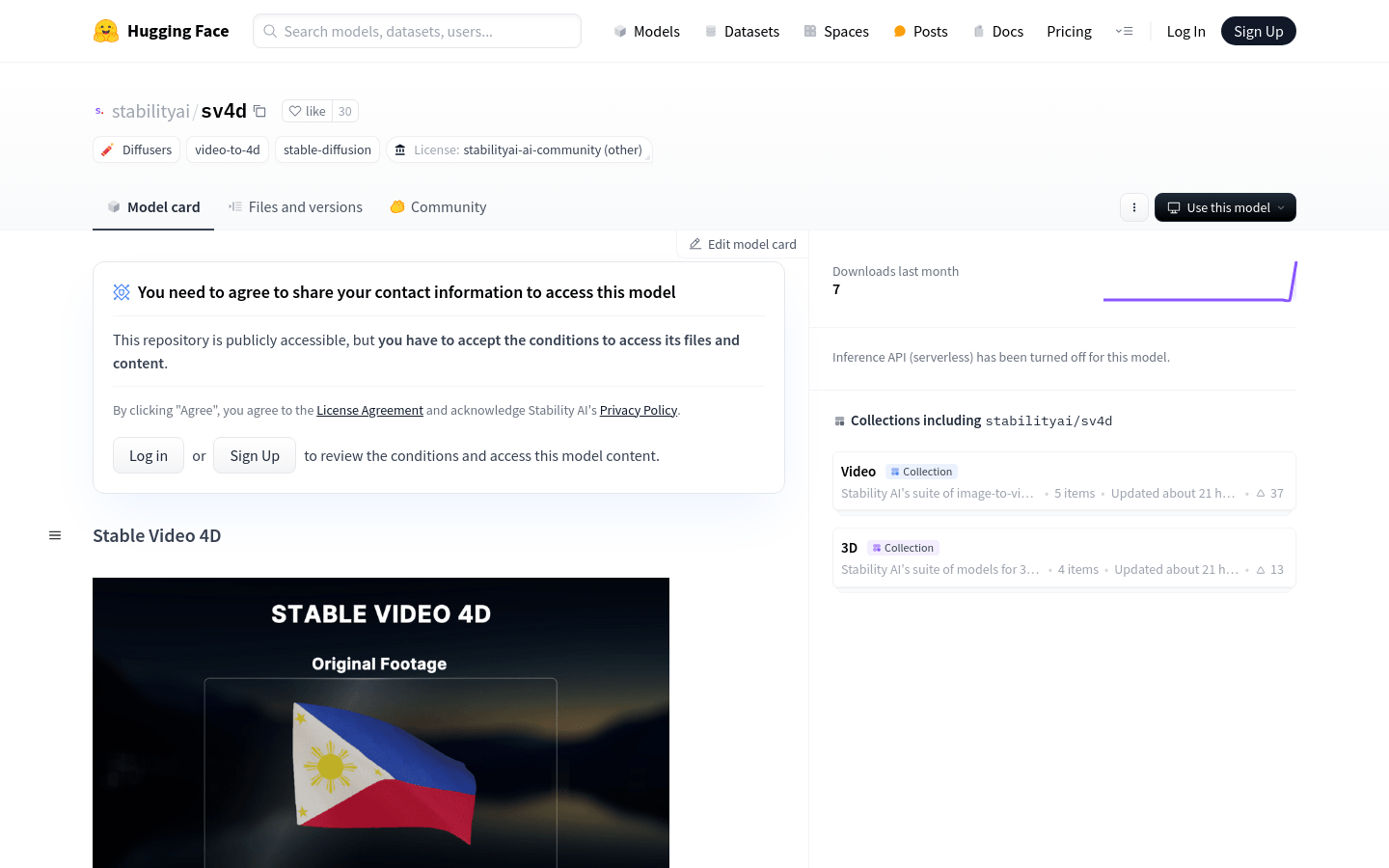
What is Stable Video 4D (SV4D)?
Stable Video 4D (SV4D) is a model that generates multiple new perspective videos from a single video input. This model combines elements of Stable Video Diffusion (SVD) and Stable Video 3D (SV3D). It creates a 4D image matrix consisting of 40 frames at 576x576 resolution given five reference frames of the same size. The process involves using SV3D to generate track videos which serve as reference views for SV4D. SV4D then samples new perspectives using these track videos and input frames.
Who can benefit from SV4D?
Artists, designers, educators, and researchers can all benefit from SV4D. Artists can use it to create dynamic visual presentations for exhibitions. Designers can enhance product displays with multi-perspective videos. Educators can provide clearer explanations of complex concepts through multi-angle videos. Additionally, it can be used in research to explore the limitations and capabilities of generation models.
How does SV4D work?
1. Prepare five reference frames with a resolution of 576x576.
2. Use the SV3D model to generate track videos that act as reference views.
3. Input both the track videos and the original video as reference frames into SV4D.
4. Run the SV4D model to produce a 4D image matrix.
5. Optionally, use the first frame as an anchor and perform dense sampling (interpolation) to extend the video length.
6. Review the generated video to ensure it meets expectations and make adjustments if needed.
7. Apply the final video in artistic creations, design presentations, or educational demonstrations.







